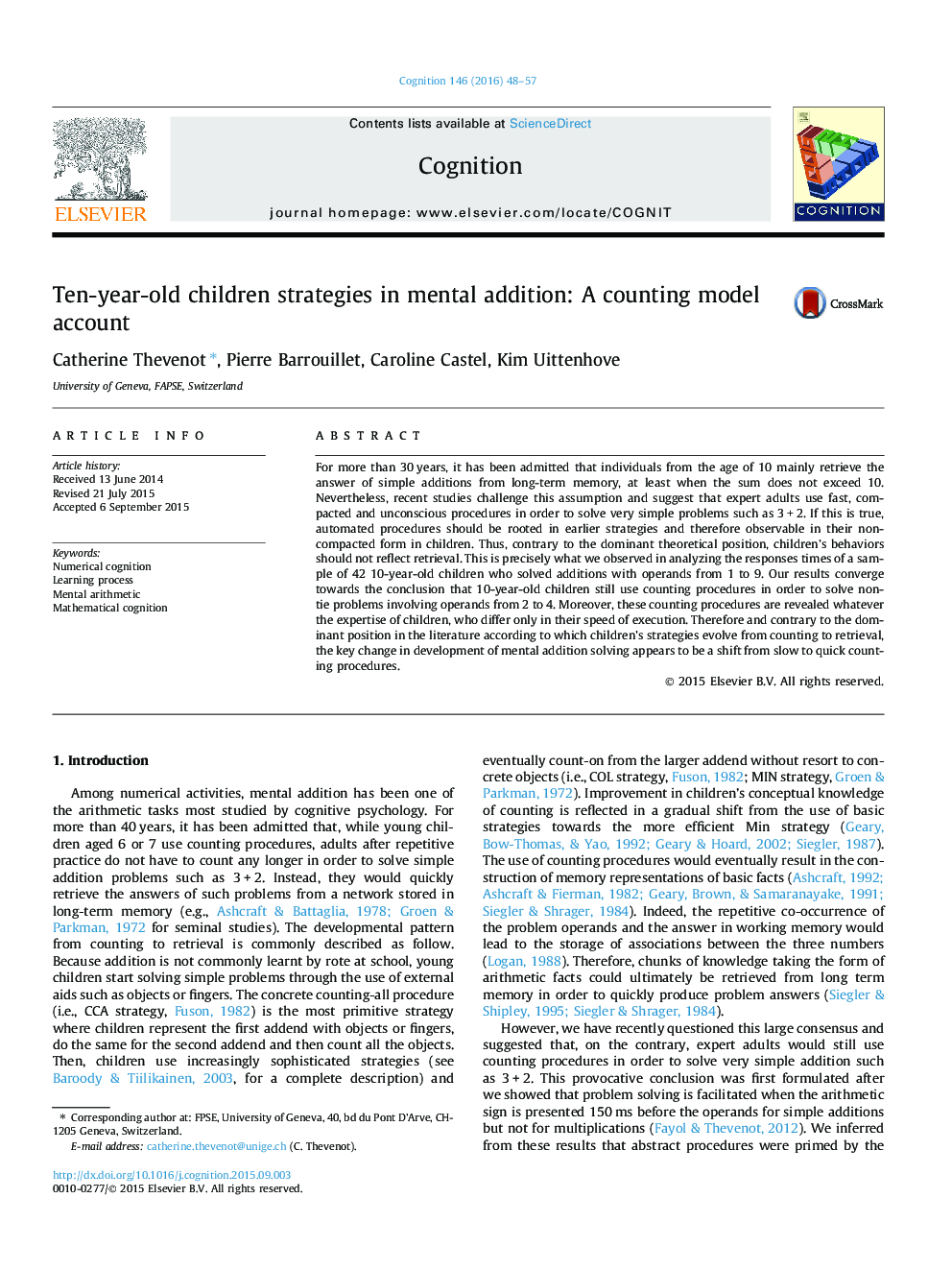| Article ID | Journal | Published Year | Pages | File Type |
|---|---|---|---|---|
| 7286367 | Cognition | 2016 | 10 Pages |
Abstract
For more than 30Â years, it has been admitted that individuals from the age of 10 mainly retrieve the answer of simple additions from long-term memory, at least when the sum does not exceed 10. Nevertheless, recent studies challenge this assumption and suggest that expert adults use fast, compacted and unconscious procedures in order to solve very simple problems such as 3Â +Â 2. If this is true, automated procedures should be rooted in earlier strategies and therefore observable in their non-compacted form in children. Thus, contrary to the dominant theoretical position, children's behaviors should not reflect retrieval. This is precisely what we observed in analyzing the responses times of a sample of 42 10-year-old children who solved additions with operands from 1 to 9. Our results converge towards the conclusion that 10-year-old children still use counting procedures in order to solve non-tie problems involving operands from 2 to 4. Moreover, these counting procedures are revealed whatever the expertise of children, who differ only in their speed of execution. Therefore and contrary to the dominant position in the literature according to which children's strategies evolve from counting to retrieval, the key change in development of mental addition solving appears to be a shift from slow to quick counting procedures.
Related Topics
Life Sciences
Neuroscience
Cognitive Neuroscience
Authors
Catherine Thevenot, Pierre Barrouillet, Caroline Castel, Kim Uittenhove,
